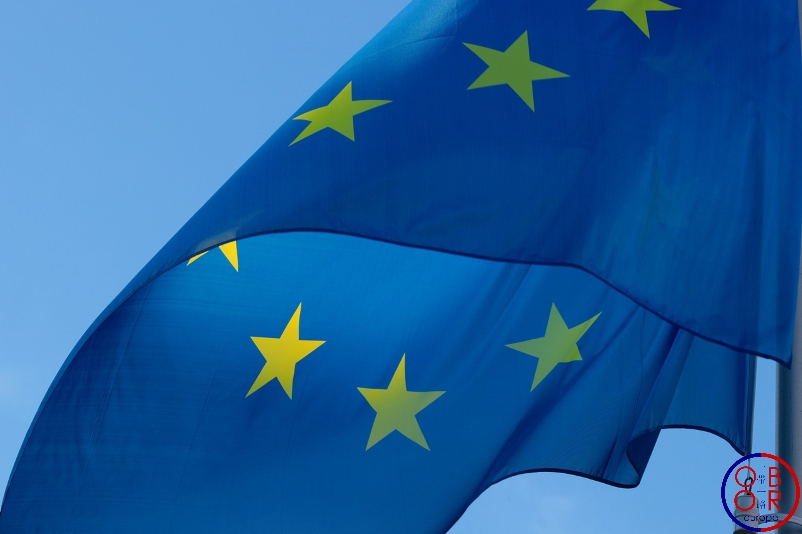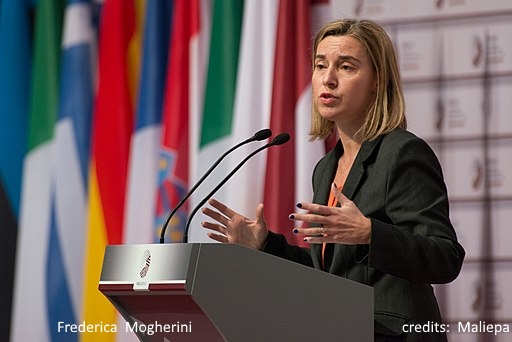
On 18 and 19 October 2018, the 12th Asia-Europe meeting was held in Brussels, bringing together heads of governments from Europe an Asian countries. The purpose of this meeting is to strengthen exchanges between Europe and Asia in the areas of security, culture and connectivity. The various heads of state discussed connection projects on the Eurasian continent, including the new European plan.
The European plan
 In September 2018, Frederica Mogherini, High Representative of the European Union for Foreign Affairs and Security Policy, unveiled a European strategic program on connectivity between Europe and Asia.
In September 2018, Frederica Mogherini, High Representative of the European Union for Foreign Affairs and Security Policy, unveiled a European strategic program on connectivity between Europe and Asia.
The objective of this plan is to export to Asia the several successes the European Union has achieved regarding in connectivity in Europe. Thus, this document highlights a European path based on sustainable development, the free movement of people, goods, services and capital, as well as on the respect of international rules.
One of the priorities of this plan is to develop the trans-European Transport Network (TEN-T), particularly in six states in Eastern Europe and the Caucasus region, namely Belarus, Moldova, Ukraine, Georgia, Armenia and Azerbaijan, and link them to other economic corridors in Asia.
Other important points include the realization of digital roads as a development tool in the most secluded regions and the development of cultural and scientific exchanges between Europe and Asia.
This document encourages Europe to deepen its bilateral relations with the main states of the Asian continent, including China and Iran, and to support international agreements such as the Paris Agreement on Climate Change.
To finance these connectivity corridors, the European Union hopes to develop cooperation with the public and private sectors, as well as with sovereign funds. The document also supports the co-financing with international financial institutions such as the Asian Development Bank and the Asian Infrastructure Investment Bank.
According to this plan, the European Union is about to inaugurate a consulting group for companies involved in Europe-Asia connectivity (Business Advisory Group for Euro-Asian Connectivity) to encourage SMEs to develop their activities in Asia.
Relations with the BRI
While we can welcome the fact that the European Union is strongly committed to strengthening its relations with Asia, it is very regrettable that the European plan does not mention the BRI
It is therefore necessary to question the European initiative in regards to China’s BRI.
Since the launch of the “Belt and Road initiative”, several powers have been trying to respond to this Chinese project by developing similar, competing programs. This is the case of the United States or India with the Africa-Asia growth corridor. But the different states must beware of developing rival projects, as this would have a negative impact on the expected results in terms of development.
On the contrary, they must seek to work together to maximize connectivity on the Eurasian continent. The “Belt and Road initiative” is sufficiently open to welcome all states concerned by these issues. To officially join the BRI would also be a good way for the European Union to defend its interests and make its voice heard, especially on investment rules and standards.
The European plan should not be used by Europe as an alternative to the BRI. It must work as a complementary initiative to the BRI. Asian states should not have to choose between the two projects, but use both instruments.
The success of the European plan therefore requires a greater coordination with China to avoid competition (moreover this competition would be mainly to the detriment of Europe, as the EU has not disclosed the amount of investments it plans to devote to this initiative), and a permanent dialogue between Brussels and Beijing to revive the new Silk Roads.
